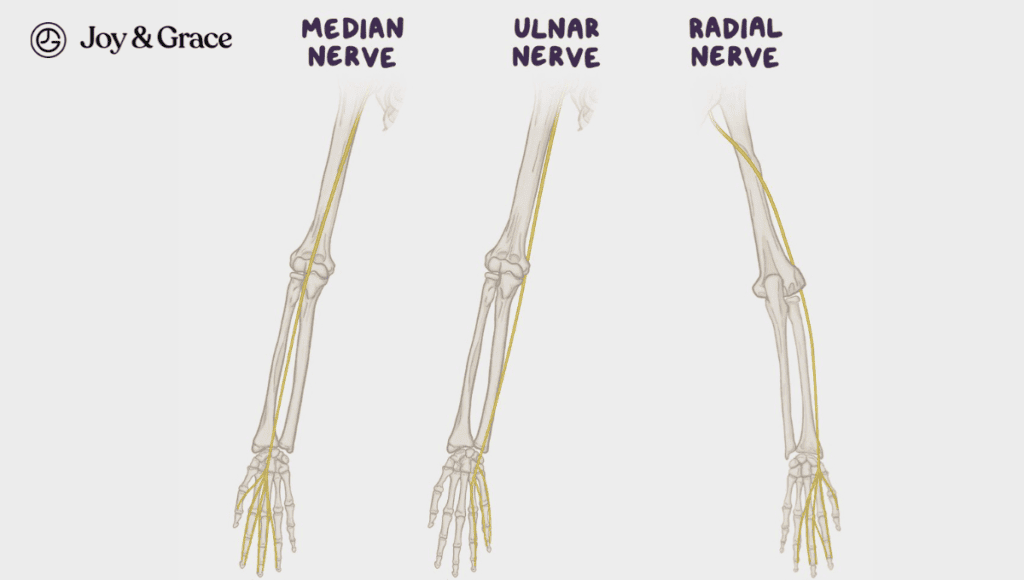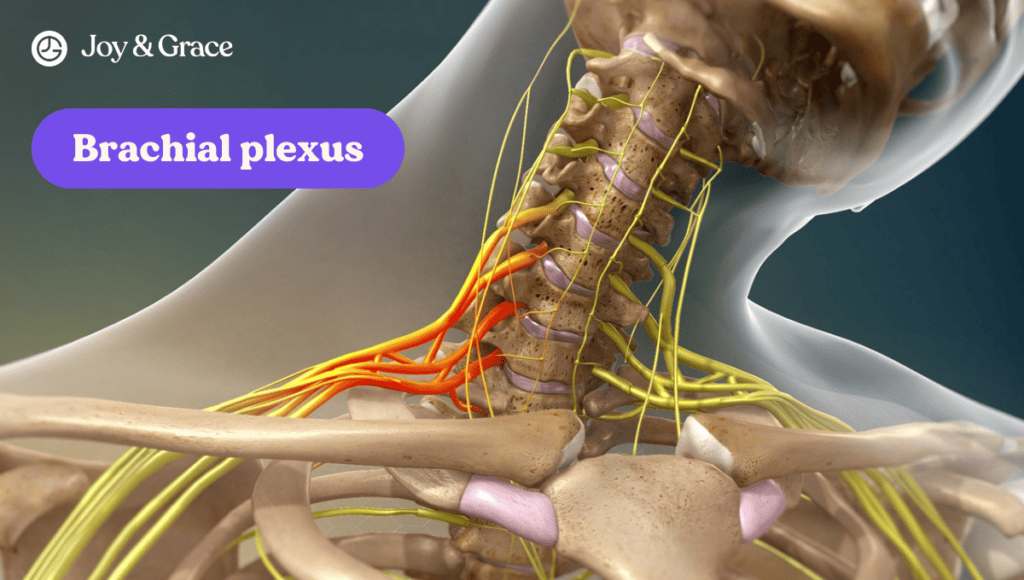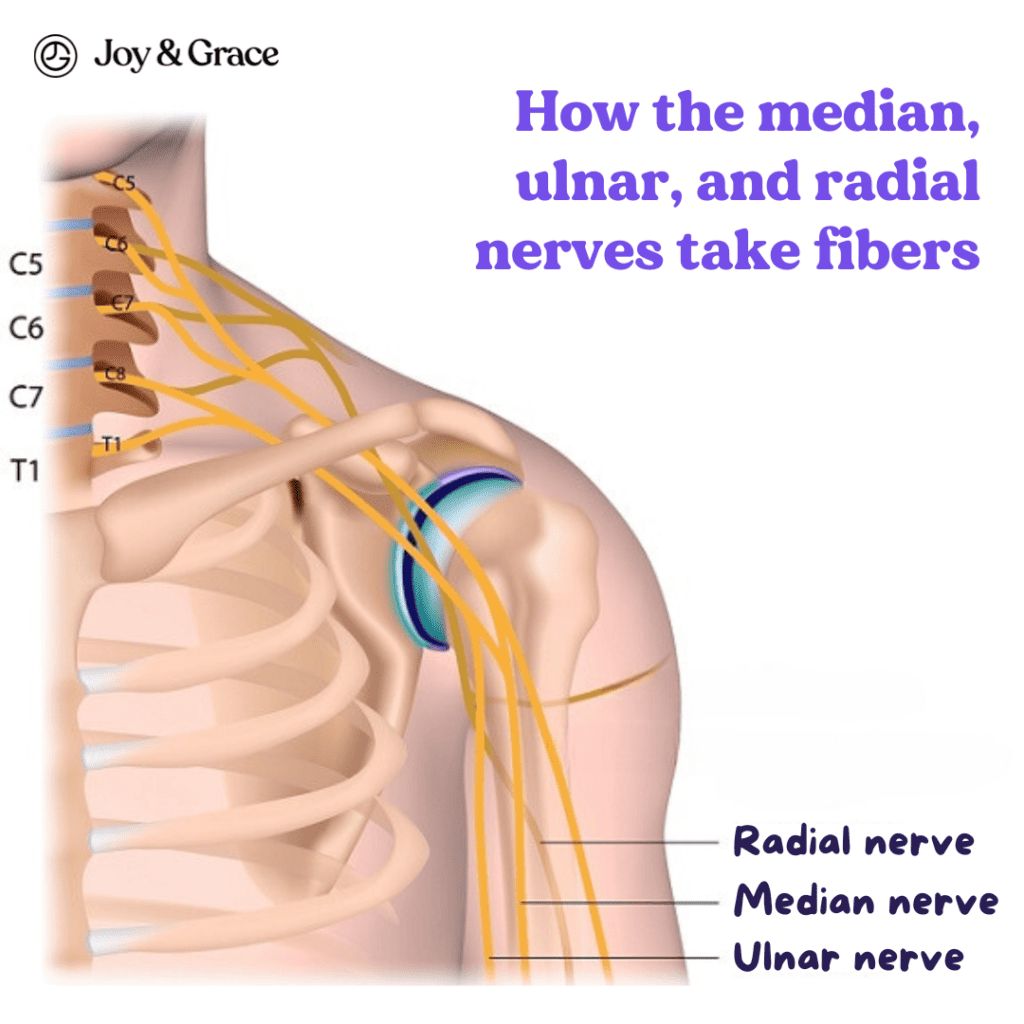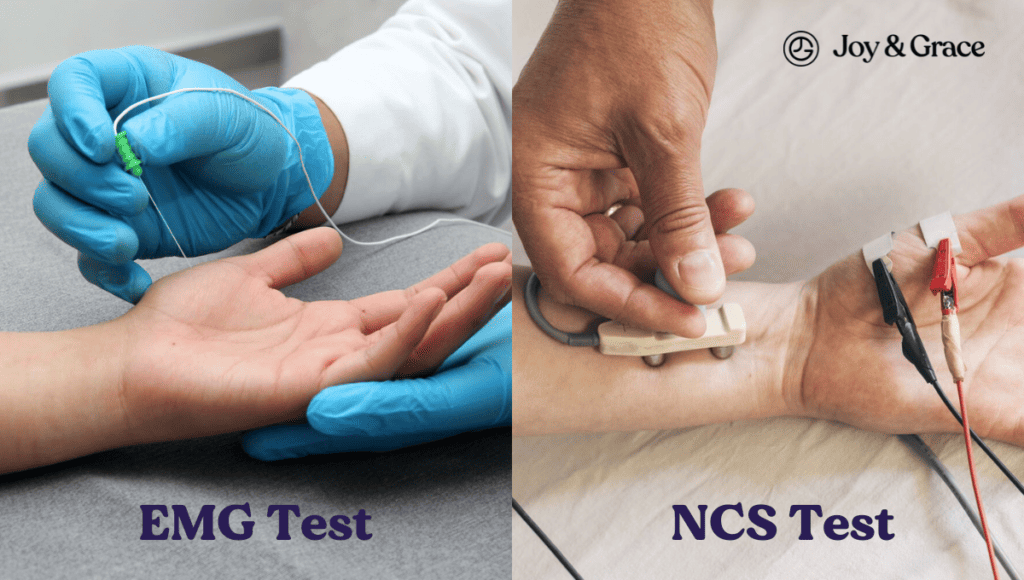If you’ve ever dealt with neck pain, you know well how troublesome it can be. But have you ever felt your neck hurt while simultaneously having numb fingers? It sounds like double the trouble!
If you can relate to this scenario, you're not alone. As strange and mysterious as it might sound, neck pain and finger numbness may be connected. Join us in this article as we untangle this connection to the core.
Can Neck Issues Cause Numbness in the Fingers?

Yes, neck issues can definitely cause numbness in the fingers.
To elaborate further:
Neck issues are diverse and manifest in various ways.
The neck is a passageway for countless nerve fibers carrying signals up and down the body.
The fibers supplying the fingers are no exception. They originate in the neck and pass through neck structures as they march toward their destinations. Thus, it’s totally possible that neck issues may also lead to numbness in the fingers.
However, having numb fingers doesn’t automatically mean there’s something wrong with your neck. Read along as we go into more detail.
What Nerve in the Neck Causes Numbness in the Fingers?
Let’s first discuss some anatomy! Three main nerves supply the hands and fingers:
- The median nerve
- The ulnar nerve
- The radial nerve
Each of these nerves has sensory and motor components. This means they enable sensation as well as hand and finger muscle function.
Why Are My Hands and Fingers Numb and Tingling?

Occasionally, numbness and tingling in your hands and fingers can be due to harmless and temporary causes, like stress or low blood sugar.
However, these sensations are also characteristic symptoms of nerve issues or lesions.
In fact, numbness and tingling are just two of the characteristic symptoms of nerve problems. Additional symptoms may include:
- Muscle weakness
- Cramps
- Twitchy muscles
- Loss of muscle and bone
- Changes in skin, hair, or nails
- Loss of sensation or feeling in body parts
- Loss of balance
- Emotional changes
- Sleep disruptions
- Inability to control heat and sweating
- Loss of control over the bladder
All that’s needed for these symptoms to appear is an injury to the hand nerves somewhere along their routes.
Speaking of routes, the three listed nerves first come out of the brachial plexus.
The brachial plexus is a network of nerves in the shoulder region. Their fibers arise from various neck nerve roots. The roots, in turn, stem from the spinal cord. That’s a lot of names to remember, huh? Well, we’re getting to our main point.
Neck pain-related conditions may damage any spinal nerve roots associated with the nerves that supply the hands and fingers. As a result, numbness, tingling, and weakness of the fingers and hands can come about.
What Fingers Are Affected by Neck Pain?

Let’s get it straight. Neck pain-related disorders don’t necessarily pick and choose between fingers. The truth is that neck pain may indirectly affect any finger.
As we mentioned, neck pain can co-exist with damage to the three nerves that supply the fingers. Each nerve (the median, ulnar, and radial) supplies specific parts of the fingers and hands. A median nerve lesion, for example, may cause symptoms in the area that the median nerve supplies. Does this make sense? Let’s visualize.
- The backside of the tips of the thumb and index fingers (fingers or digits one and two)
- The front side of the thumb, index, and middle fingers (fingers 1-3)
- The front side of half of the ring finger (the fourth finger)
- Two-thirds of the palm
- Damage to the ulnar nerve fibers leads to numbness in:
- The pinky finger (the fifth finger)
- Half of the ring finger (the fourth finger)
- One-third of the palm
- Damage to the radial nerve fibers leads to numbness in:
- The backside of the thumb, index, and middle fingers (fingers 1-3)
- The backside of the other half of the ring finger (the fourth finger)
- The backside of half of the hand
Which Fingers Are Affected by C6-C7?

C6 and C7 represent the levels of two different vertebrae in the neck. The neck part of the spine contains seven vertebrae marked C1 to C7. These are known as the cervical vertebrae. They’re stacked on top of each other to form a column called the spinal column. Within this column lies the spinal cord.
Now, between every two neck vertebrae, a neck or cervical spinal nerve comes out. There are eight neck spinal nerves in total (named C1 to C8). This means there’s one nerve for each level plus an extra between C7 and T1 (the first thoracic vertebra). Other spinal nerves below are designated with a T, L, or S, depending on their levels (thoracic, lumbar, or sacral).
The eight neck nerves carry fibers that interconnect at the brachial plexus. Finally, we’re into some more familiar waters! As discussed, the brachial plexus is the origin of the hand and finger nerves. You can now see how these three nerves may carry fibers from different spinal levels. Here’s how it goes:
- The median nerve takes fibers from C5-C8 (and T1).
- The ulnar nerve takes fibers from C7, C8 (and T1).
- The radial nerve takes fibers from C5-C8 (and T1).
Thus, a neck pain-associated issue involving C6 may affect the median and radial nerves.
On the other hand, a problem involving C7 might affect all three! Numbness, along with other symptoms, can be felt all over the hand and fingers.
What Causes Numbness and Tingling in the Neck?
What could be the mysterious culprit behind your pain and numbness? You might be dealing with any of several causes, which may lead to one another and include:
- Cervical radiculopathy
When a nerve root in the neck is pinched or compressed, it can lead to cervical radiculopathy. As a result, pain signals may radiate down your neck, shoulder, arm, hand, and fingers. The pain may also be accompanied by numbness, tingling, and weakness in these regions.
Cervical radiculopathy may occur after some of the other causes we’ve listed below, like:
-
- Wear-and-tear degeneration of the spine
- Disc herniation
- Injuries involving the neck
- Neck arthritis and cervical facet syndrome
These medical conditions belong to the group of degenerative diseases. They’re marked by wear-and-tear degeneration of the spinal bones or vertebrae. The degeneration is usually gradual and builds up with age. With time, it might affect the cervical nerves. This results in symptoms in the neck and elsewhere.
- Herniated disc disease
This condition happens when the disc between your vertebrae slips out of place. This disc serves as a cushion. Herniation can compress neck nerves, causing lots of pain. Due to the mechanisms we explained, the fingers may also suffer.
- Neck and shoulder traumatic injuries
Traumatic injuries of the neck and shoulder may directly damage bones, muscles, and nerves. They can be unpredictable and affect several body regions at once. The most common types include traffic accidents, sports injuries, and falls.
- Cervical sprains and strains
A cervical sprain or strain is associated with neck pain from tight or damaged neck muscles. Increased muscle tension may arise from:
-
- Poor posture
- Excessive movements (such as in whiplash)
- Heavy lifting
Tight neck muscles (such as tight traps) may lead to nerve compression, which may, in turn, bring up symptoms like finger numbness.
- Rotator cuff injuries
The rotator cuff is a group of muscles that brace the shoulder joint. Injuries to these muscles may cause shoulder pain that may spread to the neck. They may also directly affect the brachial plexus. Do you see where we’re getting at? Rotator cuff injuries may cause neck pain and numbness along the arm, hand, and fingers at the same time.
Remember: Understanding the common causes of neck pain and numb fingers does not mean you’re free to jump to conclusions. Neck issues should be addressed promptly. If you’re in doubt and questioning your symptoms, make sure you consult your doctor.
Diagnosis: What Test Shows Nerve Damage in Neck?

Diagnosing the condition behind your neck pain and finger numbness might be tricky. This is why you’d be better off leaving it to a medical professional.
Let’s be clear here. Just because you’re experiencing neck pain and numb fingers doesn’t imply they’re always linked. Chances are, you might have two different conditions at once! For example, your neck could suffer from poor posture, while a wrist injury could’ve affected your finger nerves. The possibilities are numerous. Hence, your doctor’s opinion is invaluable.
A professional evaluation always begins with medical history-taking. Your doctor will likely ask you a few questions about your symptoms, how and when they appeared, or how severe they are.
Then, your doctor can perform a physical examination. A physical exam may include:
- A thorough examination of the looks and range of motion (ROM) of your neck, shoulders, arms, hands, and fingers
- Tests of your reflexes, muscles, and sensory functions
- Tests of active and passive movements that trigger and relieve your symptoms
Doctors often order laboratory or imaging tests to help them pinpoint the diagnosis. Helpful imaging tests in cases of neck and upper limb issues include an X-ray and MRI (Magnetic Resonance Imaging).
Additional tests may come in the form of electrodiagnostic tests. These tests are performed to confirm a suspected diagnosis. They may include:
- Electromyography (EMG)
An EMG test uses small wires to stimulate nerves. By stimulating nerves, this test can check if muscles are responding to nerve impulses. EMG results are displayed on a monitor. - Nerve conduction studies (NCS)
NCS makes use of two wires set on the skin over a nerve. While one wire stimulates the nerve, the other records it. NCS can help recognize nerve damage or lesions.
How Do You Treat a Pinched Nerve in Your Neck?
Curing neck pain and numb fingers means treating the underlying cause. If a neck issue is deemed responsible for your symptoms, it gets the spotlight.
Treatment options of cervical radiculopathy, as a known common culprit, may involve:
- A cervical collar
A soft cervical collar is a padded wrap that can be put around the neck. Its goal is to limit harmful neck movements and keep the neck in place. These functions may also prevent pinched nerve pain from a radiculopathy. A neck collar should only be worn for a short time. Long-term use may make your neck muscles weak, leading to instability. - Physical therapy
Physical therapy involves exercises that can strengthen neck muscles and improve their range of motion. Start with easy, light exercises, and slowly progress to more challenging movements. - Medications
Painkiller medications are often first-line therapies for any kind of pain, including neck pain. The most popular painkillers include nonsteroidal anti-inflammatory drugs (NSAIDs) and Tylenol. They’re also available over the counter.
Oral corticosteroids are effective prescription medications that act against inflammation. They may be only short-term solutions for pain relief, as they’re associated with side effects. - Injections
Steroid injections may soothe pain and provide relief from nerve swelling and numbness. They’re especially handy when oral medications don’t work. - Surgery
Your doctor may recommend surgical treatment if conservative treatments fail. The type of surgery used for radiculopathy is called cervical neck fusion.
Takeaway
Neck issues that cause neck pain may also lead to numbness in the fingers.
The three nerves supplying the hand and fingers are the median, ulnar, and radial nerves.
Neck pain-related conditions may damage the roots associated with the nerves that supply the hands and fingers. As a result, numbness, tingling, and weakness of the fingers and hands can appear.
Each supplying nerve is designated for specific parts of the fingers and hands. Thus, the symptoms vary depending on the injured nerve.
The main causes of neck pain-related finger numbness range from cervical radiculopathy to rotator cuff injuries.
Just because you’re experiencing neck pain and numb fingers doesn’t imply they’re always connected. Neck issues should be addressed promptly. If you’re in doubt and questioning your symptoms, make sure you consult your doctor.















